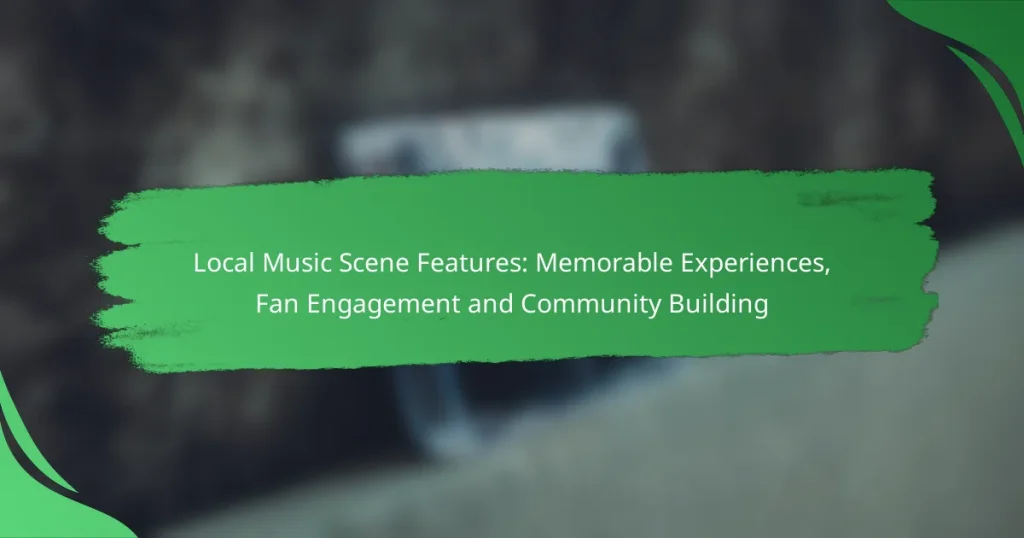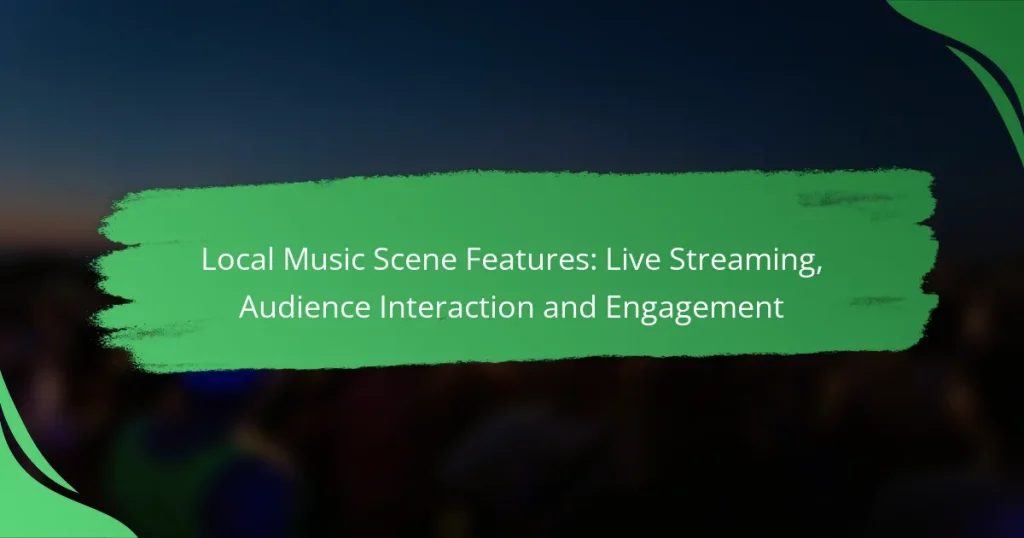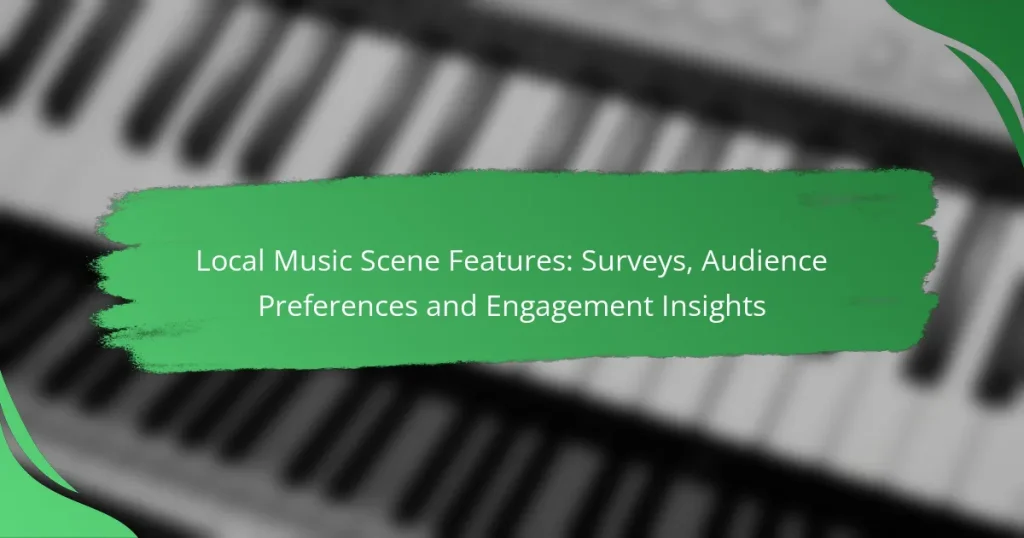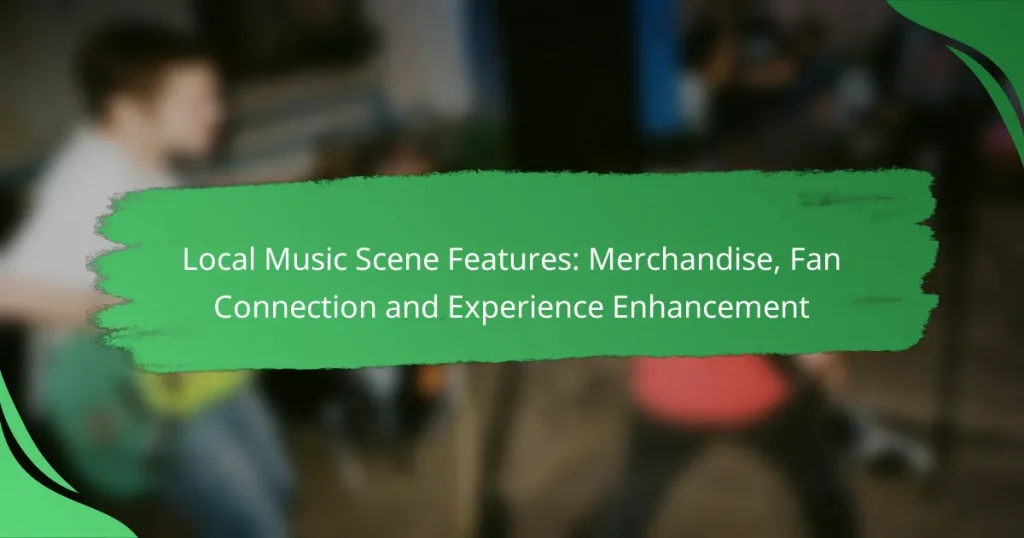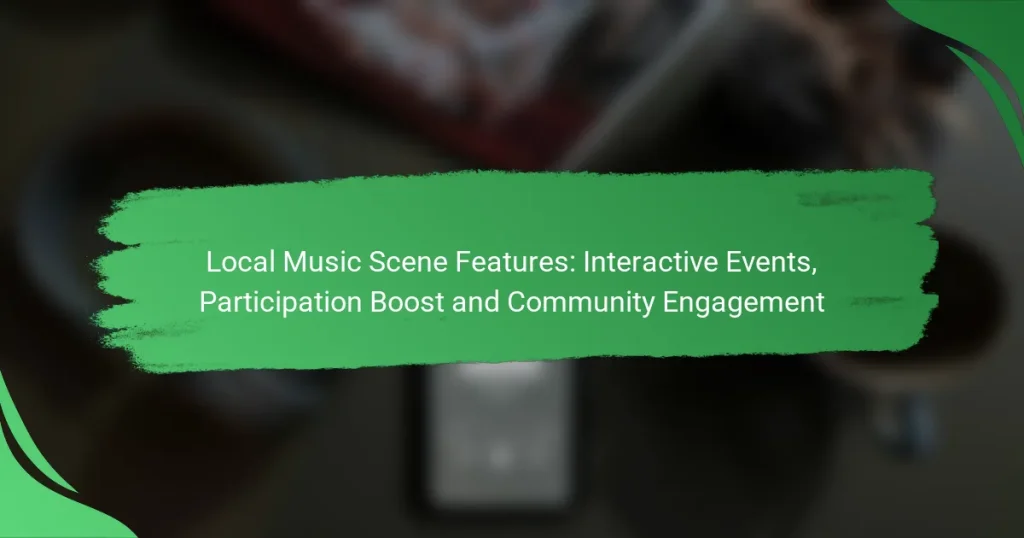Effective audience engagement techniques are essential for creating meaningful connections and encouraging participation. By utilizing strategies such as social media interaction and high-quality content marketing, brands can enhance communication, build loyalty, and drive conversions. These methods not only foster a sense of community but also ensure that audiences feel valued and involved.
Local Music Scene Features: Community Building, Fan Interaction and Support
Local Music Scene Features: Live Streaming, Audience Interaction and Engagement
Local Music Scene Features: Feedback Collection, Audience Insights and Engagement
Local Music Scene Features: Surveys, Audience Preferences and Engagement Insights
Local Music Scene Features: Merchandise, Fan Connection and Experience Enhancement
Local Music Scene Features: Interactive Events, Participation Boost and Community Engagement
What are effective audience engagement techniques?
Effective audience engagement techniques are strategies designed to actively involve your audience, fostering a deeper connection and encouraging participation. These methods can enhance communication, build loyalty, and ultimately drive conversions.
Interactive content
Interactive content includes quizzes, polls, and calculators that invite users to engage actively rather than passively consuming information. This type of content can significantly increase user retention and satisfaction, as it provides a personalized experience.
To implement interactive content, consider tools like Typeform or SurveyMonkey, which allow easy creation of engaging quizzes or surveys. Aim for content that is relevant to your audience’s interests to maximize participation.
Personalized email marketing
Personalized email marketing tailors messages to individual recipients based on their preferences, behaviors, or demographics. This approach can lead to higher open and click-through rates, as recipients feel the content is relevant to them.
Utilize segmentation strategies to categorize your audience and customize emails accordingly. For example, you might send special offers to loyal customers or tailored content to new subscribers. Ensure compliance with regulations like GDPR when handling personal data.
Social media contests
Social media contests encourage audience participation by offering incentives for engagement, such as prizes or recognition. These contests can boost brand visibility and attract new followers while keeping your current audience engaged.
When planning a contest, establish clear rules and objectives, and choose platforms where your audience is most active, like Instagram or Facebook. Consider using entry methods like tagging friends or sharing posts to increase reach.
Live webinars
Live webinars provide a platform for real-time interaction between presenters and participants, allowing for immediate feedback and questions. This format can enhance learning and engagement, making it ideal for educational content or product demonstrations.
To host a successful webinar, choose a relevant topic and promote it across your channels. Use platforms like Zoom or GoToWebinar, and ensure you have a clear agenda to keep participants engaged throughout the session.
Customer feedback surveys
Customer feedback surveys are tools to gather insights directly from your audience about their experiences and preferences. This information can guide improvements and help tailor your offerings to better meet customer needs.
Keep surveys concise and focused, using a mix of open-ended and multiple-choice questions. Consider incentivizing participation with discounts or entries into a prize draw to increase response rates. Regularly analyze feedback to implement actionable changes.
How can social media enhance audience engagement?
Social media can significantly boost audience engagement by providing interactive platforms for real-time communication and feedback. By leveraging various features across different platforms, brands can foster a sense of community and encourage active participation from their audience.
Utilizing Instagram Stories
Instagram Stories are a powerful tool for engaging audiences through ephemeral content that encourages immediate interaction. Brands can use polls, questions, and quizzes to gather feedback and insights while keeping followers entertained. Regularly posting Stories can increase visibility and maintain audience interest.
To maximize effectiveness, consider using eye-catching visuals and concise messaging. Aim for a mix of promotional and behind-the-scenes content to create a well-rounded narrative that resonates with your audience.
Creating Facebook Groups
Facebook Groups provide a dedicated space for community building and deeper engagement with your audience. By creating a group around a specific interest or topic related to your brand, you can foster discussions, share exclusive content, and encourage peer-to-peer interaction among members.
When managing a group, set clear guidelines to maintain a positive environment. Regularly engage with members by posting questions, hosting live sessions, or sharing relevant resources to keep the conversation flowing and members invested.
Leveraging TikTok challenges
TikTok challenges can drive audience engagement by encouraging users to participate in creative and fun activities related to your brand. By launching a challenge that aligns with your brand values, you can generate user-generated content and increase visibility through shares and collaborations.
To create a successful challenge, keep it simple and relatable. Provide clear instructions and consider offering incentives, such as features on your official page or small prizes, to motivate participation. Monitor the challenge’s progress and engage with participants to maintain momentum and enthusiasm.
What role does content marketing play in engagement?
Content marketing is crucial for audience engagement as it provides valuable information that resonates with target audiences. By creating relevant and high-quality content, brands can foster connections, build trust, and encourage interaction with their audience.
Blogging for audience connection
Blogging serves as a powerful tool for establishing a connection with your audience. Regularly publishing informative and engaging blog posts can help you address your audience’s needs and interests, fostering a sense of community. Aim for a consistent posting schedule, ideally once a week or bi-weekly, to keep your audience engaged.
To enhance connection, consider incorporating personal stories or case studies that reflect your brand’s values. This approach not only humanizes your content but also encourages readers to share their experiences, further deepening engagement.
Video marketing strategies
Video marketing is an effective way to capture attention and convey messages quickly. Short videos, typically ranging from 30 seconds to 2 minutes, can be particularly impactful on social media platforms. Focus on creating engaging content that tells a story or provides solutions to common problems faced by your audience.
Utilize live streaming to interact with your audience in real-time, allowing for immediate feedback and questions. This format can significantly boost engagement as viewers feel a direct connection to your brand.
Infographics for information sharing
Infographics are an excellent method for simplifying complex information and making it visually appealing. By presenting data and insights in a clear, graphic format, you can enhance understanding and retention among your audience. Aim for infographics that are concise and focus on a single topic to maximize impact.
When creating infographics, ensure they are shareable across social media platforms. Including your brand’s logo and a call-to-action can encourage viewers to engage further with your content, driving traffic back to your website or blog.
How to measure audience engagement effectively?
Measuring audience engagement involves analyzing how users interact with your content across various platforms. Key metrics include time spent on site, bounce rates, and social media interactions, which provide insights into audience interest and involvement.
Using Google Analytics
Google Analytics is a powerful tool for tracking audience engagement on your website. It offers metrics such as session duration, pages per session, and bounce rate, which help gauge how well your content resonates with visitors.
To effectively use Google Analytics, set up goals that align with your engagement objectives, such as newsletter sign-ups or product purchases. Regularly review these metrics to identify trends and adjust your content strategy accordingly.
Engagement metrics on social platforms
Social media platforms provide unique engagement metrics that can inform your marketing strategies. Key metrics include likes, shares, comments, and click-through rates, which indicate how well your content is performing in terms of audience interaction.
To optimize engagement on social media, focus on creating shareable content and encourage audience interaction through questions or polls. Monitor these metrics regularly to understand what types of content generate the most engagement and refine your approach based on these insights.
What are the prerequisites for successful audience engagement?
Successful audience engagement requires a clear understanding of your audience and well-defined objectives. These prerequisites ensure that your strategies resonate with the intended demographic and achieve desired outcomes.
Understanding target demographics
Understanding target demographics involves identifying the specific characteristics of your audience, such as age, gender, location, interests, and behaviors. This information helps tailor your content and engagement strategies to meet their preferences and needs.
Consider using surveys, social media analytics, and market research to gather insights about your audience. For example, if your target demographic is primarily young adults aged 18-24, platforms like Instagram or TikTok may be more effective for engagement than traditional media.
Defining clear engagement goals
Defining clear engagement goals is essential for measuring success and guiding your strategies. Goals should be specific, measurable, achievable, relevant, and time-bound (SMART), allowing you to track progress and adjust tactics as needed.
For instance, a goal might be to increase social media interactions by 20% over three months. This clarity helps focus your efforts on activities that drive engagement, such as interactive posts, contests, or live Q&A sessions.
